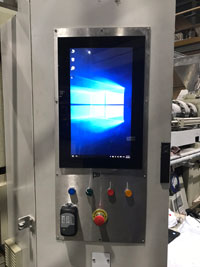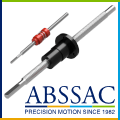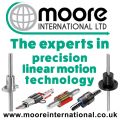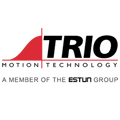
Posted to News on 26th May 2020, 00:00
Modernising legacy machinery for productivity enhancements
Downtime and return on investment (RoI) are two of the biggest focus areas for manufacturers; the minimisation of the first, and the maximisation of the second. So, when a recent investment threatens to be undermined by the failure of an unsupported control system, it’s imperative that a lasting solution is put in place. Systems specialist Pressure Design was contacted by a manufacturer to provide one such solution – and they delivered it with the help of Beckhoff Automation.

The uncertainty and volatility of most markets, in recent years, has driven many manufacturers to look inwards for cost savings and productivity enhancements. These goals have typically been achieved by improving efficiency and adopting automation systems to bolster existing equipment. These focusses, along with an ongoing need for constant availability, mean that many industrial businesses rely on machines that are decades old.
Legacy machinery, while potentially pivotal in an industrial process, comes with challenges. Older machinery is more prone to breakages and failure that, in turn, can lead to dreaded unplanned downtime. This directly hampers the productivity that manufacturers are striving towards and, based on figures reported by Oneserve in 2017, costs manufacturers £180 billion each year.
In addition, older systems may be limited in their functionality compared with newer alternatives. As such, many industrial businesses opt to modernise legacy equipment rather than replace it wholesale; this keeps new capital expenditure to a minimum while improving their operations.
Pressure Design’s customer approached them to do precisely this. The industrial customer was using a Negri Bossi V680 injection moulding machine in its processes. Built in 1999, this machine had served the company well for years. However, it was limited in its output with a screw diameter of 100mm and was incompatible with recycled polyvinyl chloride (PVC).
To overcome these limitations, Pressure Design modified the machine so that it became compatible with recycled PVC feed. The machine could now also produce 30kg of product by increasing the screw and barrel diameter to 260mm. The project was a success.
However, sometime afterwards, the control system for the V680 failed. Due to the age of the overall system, processor cards for the control system were no longer available. The company faced a dilemma. Should it scrap its recently modified machine and outlay the cost of a new injection moulder — as many manufacturers would likely do? Or, should it seek an alternative control system and invest further in modernising the machine?
The manufacturer turned back to Pressure Design, which immediately set out to develop a new control system.
Pressure Design promptly arranged an assessment of the control system and the input/output (I/O) requirements. Following this, the engineers realised that embedded PCs and TwinSAFE I/O terminals, each by Beckhoff, were the ideal choice and placed the order.
“We have worked with Beckhoff control systems in the past and know that they are incredibly capable and versatile,” says James Penty, control systems engineer at Pressure Design. “When we received the project brief, we knew that Beckhoff’s products would be the right choice to handle the multitude of I/O points for the application.”
Pressure Design immediately began developing the programmable logic controller (PLC) and human machine interface (HMI), while engineers removed the old, broken control system. By the end of the first week, Beckhoff’s CX5130 embedded PC was installed on site and ready for commissioning.
The CX5130 is a compact embedded PC powered by a 1.75 GHz Intel Atom multicore processor, with a fanless design and low power consumption. It can operate in temperatures from -25 to +60 degrees Celsius and conforms to EN 60068-2-6 environmental testing standards, which makes it an ideal fit for an injection moulding control system. Crucially, the CX5130 is also designed for easy integration into machines.
The PC also met the new expectations for the control system. The manufacturer was investing in modernising their machine’s controls, and therefore didn’t want a like-for-like replacement with no additional operational advantages. The new system had to offer extended functionality and, ideally, provide a means of reducing energy usage.
“Early in the project, the customer made the suggestion to look into saving power by turning off the pumps when they are not needed,” explains James. “The cure time for the 30kg products from the moulder was around 300 seconds. Since the largest pump was driven by a 95kW inverter and used for only 14 seconds per cycle, we identified that it could be turned off for most of the machine cycle.”
To effectively manage this, a specific I/O setup was required that would allow the control system to oversee not only the moulder, but also the pump, independently and safely. This would require the system to separate the equipment into groups, therefore allowing easier segmentation between these logically distinct applications. Pressure Design set up an integrated Beckhoff TwinSAFE solution to do this.
This solution involved the use of the EL2911 safety EtherCAT terminal, which allows the setup of TwinSAFE groups, with a safe power supply of 24V and up to 10A. The terminal also provides four fail-safe inputs and integrates a programmable TwinSAFE logic, which allows engineers to launch safety applications directly in the terminal. This terminal connects to five Beckhoff EL2024 digital output terminals that, in turn, direct the control signals safely to the hydraulics.
With the products now set up and integrated into the machine, it was time to begin running the injection moulding process in order to test how effective the new control system was. “We used two of the new EL2911 terminals to drop the 24V potential supply off to the five EL2024s’ 2A digital output terminals, which drive the hydraulic solenoid valves and contactors,” says James. “As the heaters tuned up to running temperature, it was time to run the 200A inverter. Then, with all the four axes running well, material was added to the machine to try the first automatic cycle.
“The machine was making products in automatic mode by day five of commissioning. By the seventh day, it was left for the night shift to run and it hasn’t stopped since. The new, enhanced control system is fully-functional and gives the business new levels of insight into its production.”
Not only did a newfound capability to turn off the pump while not in use improve the overall efficiency of the machine, the control system could now also provide live performance data. The production data, alarms and overall equipment effectiveness (OEE) data is published to MQTT, and data is also accessible on mobile devices or browsers through the use of AWS.
Using this information, the team monitored the energy usage of the new system across several cycles. The system presented some striking data. “We compared the energy usage with the new controls to those of other, very similar, machines. On average, we found that the electricity usage of similar moulders would cost from between £25 to £33 per tonne of product. Using the new system, the cost per tonne of product came to £11 – an estimated saving of £24,000 per year.
With this, the system almost immediately demonstrated its ability to provide a clear ROI for the manufacturer. Simultaneously, it also highlighted the value and potential of modernising older industrial systems; opportunities that the manufacturer promptly sought to seize on.
“I’ve already been asked to look at doing the same thing to a larger V1000 machine from 2005,” concludes James, who has already planned the Beckhoff equipment that will be required. “This will also incorporate energy using Beckhoff EL3403s, as well as the unloading robot – equipped with an AX5000 or AX8000 Servo Drive – to be controlled from the same HMI and production reporting.
“It’s not clear how much it would have cost this customer to purchase an entirely new machine when the failure first occurred. But, by turning to Pressure Design to modernise – instead of replace – the equipment, the company was able to minimise its expenditure while still getting an improved system with demonstrable ROI. We were able to achieve this, in no small part, because of the extensive I/O expertise behind Beckhoff products.”
The Boathouse
Station Road
RG9 1AZ
UNITED KINGDOM
















